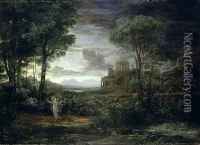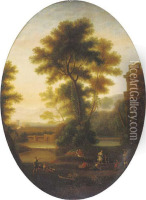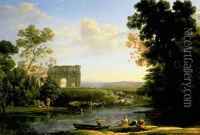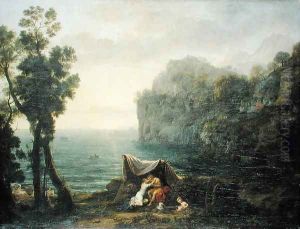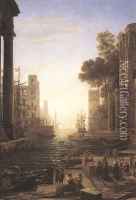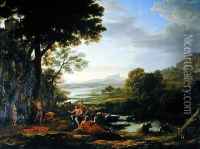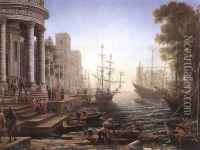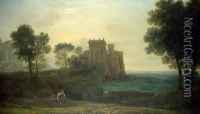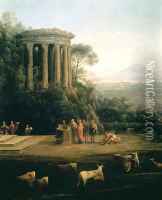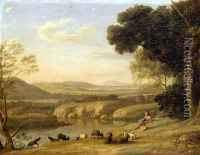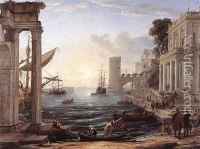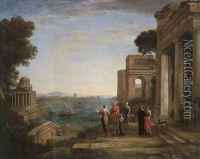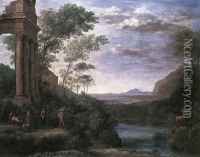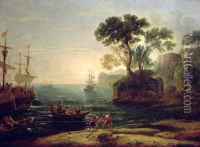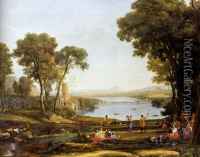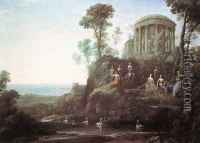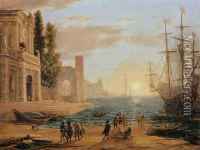Claude Lorrain (Gellee) Paintings
Claude Lorrain, born Claude Gellée and often known simply as Claude in English, was a French painter, draughtsman, and etcher of the Baroque era. He was born in the Duchy of Lorraine but left around 1612 for Germany and then Rome, where he became one of the most prominent landscape painters of his time. His work is characterized by its serene and idealized depiction of the landscape, imbued with classical architecture and staffage.
Claude's landscapes are noted for their naturalistic representation of light, particularly the atmospheric effects of sunrise and sunset, which would influence the landscape painting tradition for centuries, particularly the Romantic and Impressionist movements. His mastery in the rendering of the natural world, with a sophisticated treatment of light, was rooted in the tradition of northern Renaissance art, which he fused with the grandeur of Roman landscapes.
He was not only influential during his lifetime but also highly regarded by subsequent generations. His patrons included Pope Urban VIII and several Roman nobles, for whom he created large, beautiful seaports and pastoral landscapes. Claude never married and led a life dedicated entirely to his art.
Claude Lorrain's legacy is significant; his 'Liber Veritatis', a book of drawings that recorded his completed paintings, was an invaluable resource for artists and connoisseurs alike. His influence extended to great masters such as J.M.W. Turner, who admired and studied his works extensively. Claude's paintings remain highly valued for their visionary approach to landscape and their poetic use of light and shadow.
